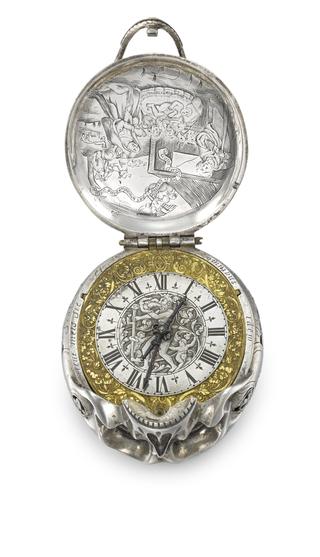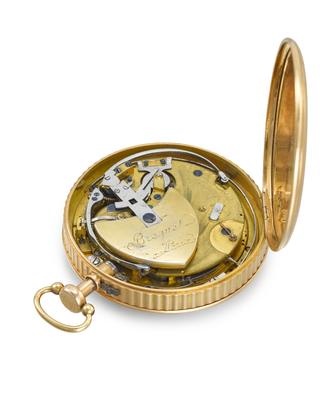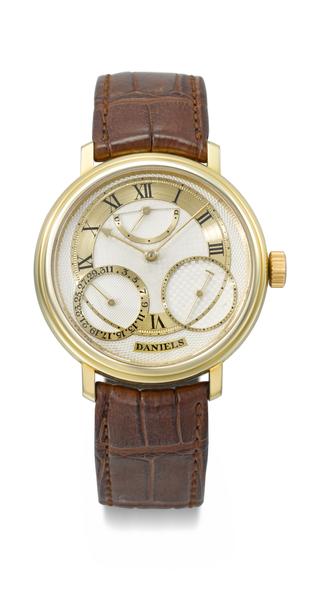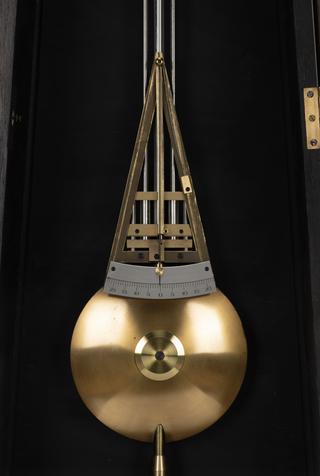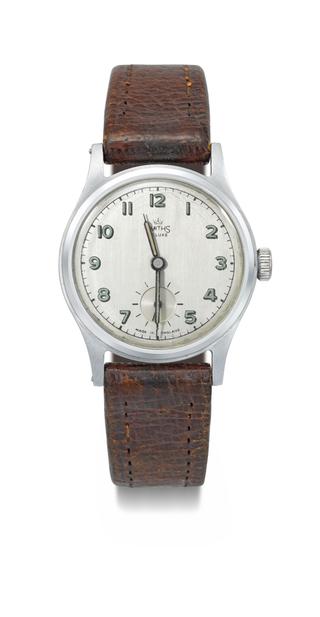








Gold pair cased, lever escapement watch by John Leroux, London, 1785. Gold cases stamped VW (for casemaker Valentine Walker) and hallmarked for 1785 – 1786. White enamel dial signed 'Leroux London'. Central minute hand with subsidiary dials for hours and seconds. Gold hands. Movement with lever escapement, for which all the impulse is given by the inclines on the hook-shaped teeth of the steel escape-wheel to pointed pallets on the lever. The short lever is placed tangentially to the escape-wheel. The pallets embrace only two teeth of the escape-wheel. A jewel set in the tail of the lever moves between the adjustable banking pins. The balance staff has a cranked roller for impulse and unlocking, and a separate roller for the safety-dart. The design of this escapement provides draw.
The balance is a four-arm steel wheel with timing screws and with two bi-metallic arms fixed to it, with stops to limit their outward movement. The free-sprung balance-spring is conical in shape. Full plate movement with fusee and stop lever. Movement signed 'J. Leroux Charg. Cross London'.
This is the earliest example of a watch with a lever escapement in the Clockmakers' Museum collection. The original detached lever escapement as devised by Thomas Mudge in the 1750’s, was developed and refined by a number of different watchmakers over the following century. It is still seen in many mechanical watches produced today, in the form of the Swiss lever escapement. Leroux’s escapement is thought to be the first to have incorporated draw; a safety feature designed into the escapement to prevent it from accidentally unlocking. This is one of only two known lever escapement watches by Leroux. Leroux became a Freeman of the Worshipful Company of Clockmakers in 1781.
Clockmakers' Museum No. 454.
Details
- Category:
- Clockmakers
- Collection:
- The Worshipful Company of Clockmakers
- Object Number:
- L2015-3365
- Materials:
- gold (metal), steel (metal), brass (copper, zinc alloy), enamel, glass and diamond
- Measurements:
-
watch: 66 mm x 51 mm x 27 mm,
outer case: 60 mm x 58 mm x 20 mm,
- type:
- watch and lever movement
- credit:
- Lent by the Worshipful Company of Clockmakers

